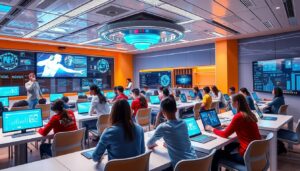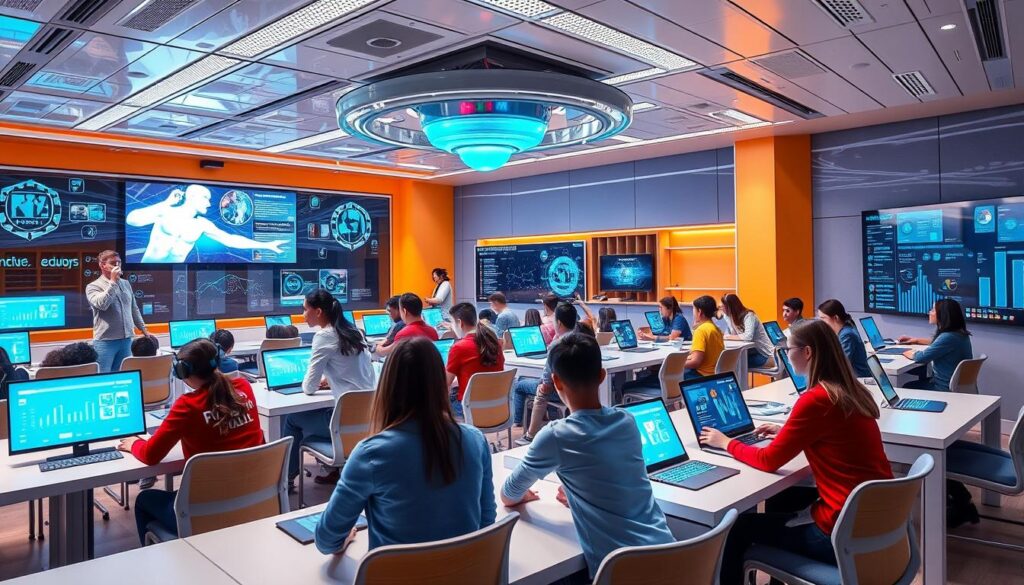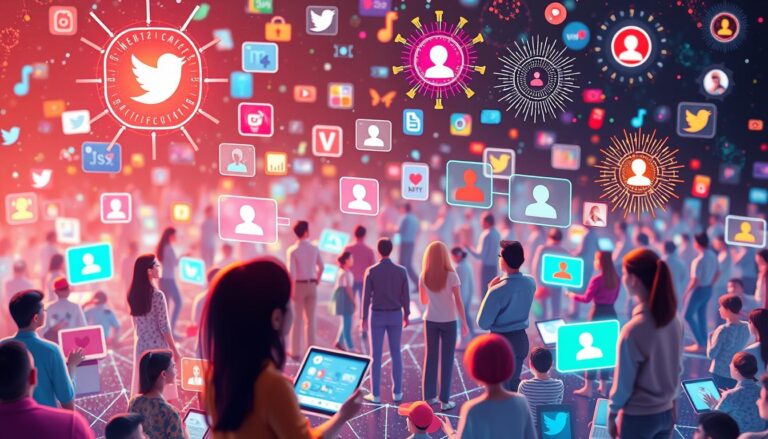The 21st century is changing the education field in big ways. It’s not just about old-school teaching anymore. Technology is at the forefront of learning now. There’s a big leap towards personalized learning and new teaching tools. Sites like EdTech Magazine and Education Week dive into these changes. They talk about how tech is changing education for the better. McKinsey & Company also looks at the global impact of this shift. We’re going to see how tech is making learning better, more engaging, and fundamentally different.
Key Takeaways
- The integration of technology is reshaping educational practices.
- Personalization enhances student engagement and learning outcomes.
- Emerging tools like VR and mobile apps are transformative.
- Addressing access issues is essential in the digital era.
- Data analytics plays a crucial role in educational success.
- The future of education requires a balance between technology and traditional methods.
The Impact of Technology on Modern Learning
Education is transforming fast, thanks to technology. New tech is redefining how we learn in ways we never thought possible. It’s not just about new gadgets. It’s about changing how teaching happens to meet all students’ needs.
Emerging Technologies and Their Role
AI and machine learning are leading this charge. They let teachers understand each student better and give personalized support. This tech does more than make classes interesting. It changes education at its core, making learning fit each student better.
Personalized Learning Experiences
Thanks to these tech advances, learning can now be tailor-made. Every student gets a learning path that’s right for them, making school more engaging. More schools are using these technologies, helping students work together, think creatively, and solve problems.
| Technology | Impact on Learning | Examples of Use |
|---|---|---|
| Artificial Intelligence | Provides individualized feedback and adapts learning experiences | Intelligent tutoring systems, chatbots for support |
| Machine Learning | Analyzes student performance data to tailor educational content | Adaptive learning platforms like DreamBox and Knewton |
| Virtual Reality | Enhances immersive learning experiences | Simulated labs and historical recreations in classrooms |
Innovative Tools Enhancing Educational Engagement
The education landscape is always changing. This is because new tools make learning more engaging. They help create fun, interactive environments that are good for all kinds of learners. VR brings lessons to life, gamification adds fun to subjects, and mobile apps let students learn anywhere, anytime.
Virtual Reality in Classrooms
With VR, students get to dive into their lessons in exciting ways. For instance, biology students can explore the human body up close. History students can visit ancient places. This kind of tech helps students understand better by showing them real-life examples, something books can’t do. VR tools help make complex ideas easier to grasp and remember.
Gamification of Learning
Gamification makes learning more like playing a game. This approach uses rewards and challenges to keep students interested. When lessons feel like games, students want to learn more. Games like Kahoot! and Classcraft make things competitive, which keeps students engaged and helps them remember what they learn. By using gamification, teachers can make learning deeper and more fun.
Mobile Learning Applications
Mobile learning lets students learn whenever and wherever they want. Apps like Duolingo and Quizlet support learning outside standard classrooms. They offer fun, interactive lessons that keep students coming back for more. Mobile learning adapts to students’ schedules, making education a part of everyday life and suiting different learning styles.
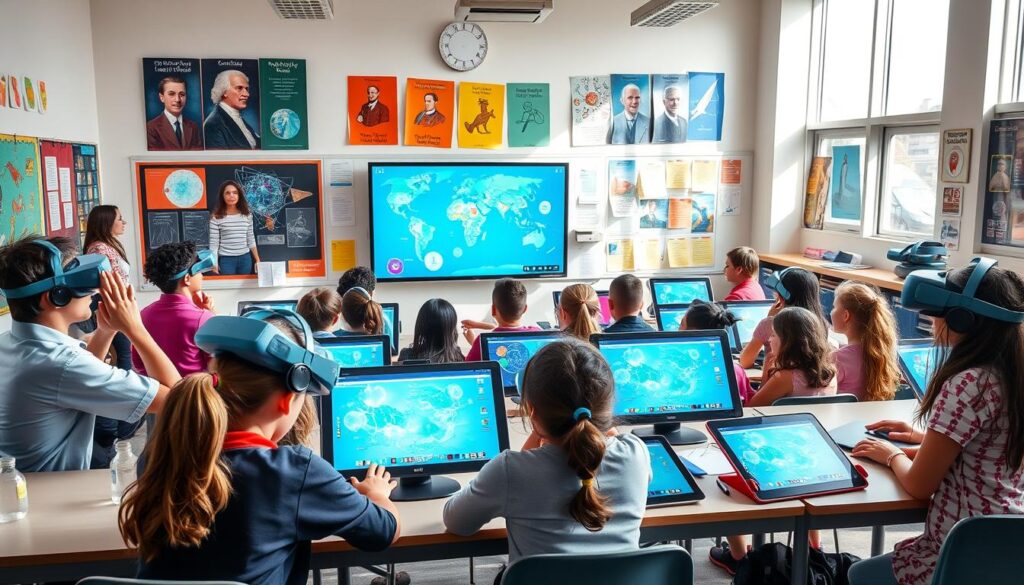
| Innovative Tool | Category | Key Benefits |
|---|---|---|
| Virtual Reality | Immersive Learning | Enhances engagement, visual understanding |
| Gamification | Interactive Learning | Boosts motivation, reinforces knowledge retention |
| Mobile Learning | Flexible Education | Accessible anytime, tailored to individual needs |
Challenges and Considerations in Educational Technology
Education technology faces unique challenges today. Solving these problems is key to making tech a real booster for learning. The digital divide and keeping students focused are big challenges.
Digital Divide and Access Issues
The digital divide shows how access to tech and the internet varies among students. This difference makes it hard for some students, especially in low-income areas, to keep up in school. They struggle without the tools or internet needed for online classes, which affects their grades. The problem comes from:
- Economic barriers preventing technology purchases
- Geographic limitations hindering internet access
- Lack of technological training and support for families
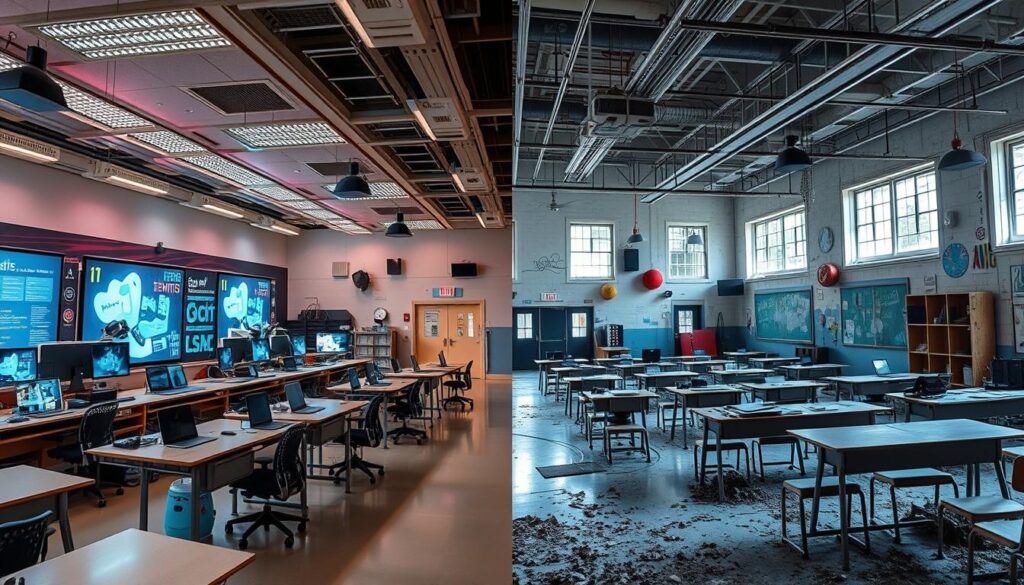
Maintaining Student Engagement
Keeping students interested with tech can be tough. Even though tech brings new ways to learn, it also brings distractions. Teachers need to work hard to make lessons exciting and interactive. They can:
- Utilizing gamification techniques to motivate learners
- Encouraging collaborative projects using online platforms
To make the most of education technology, we must bridge the digital divide and keep students engaged.
| Challenge | Description | Potential Solutions |
|---|---|---|
| Digital Divide | Lack of access to technology among certain student populations. | Provide subsidized technology programs; increase internet infrastructure. |
| Student Engagement | Difficulty in keeping students focused in a digital learning environment. | Implement interactive tools; offer relevant, engaging content. |
Education Evolving Through Data and Analytics
Data is changing the way we measure and improve learning in schools. Schools use data analytics to make teaching better, keep an eye on how students do, and make sure learning tools fit everyone’s needs. With data, teachers can see what helps students engage and do well in classes.
Using Data to Enhance Learning Outcomes
Data is key to improving how well students learn. Teachers look at student scores to see strengths and weaknesses. This helps them give the right help to those who need it. In turn, each student gets a learning plan that fits their own needs, making the classroom a better place for everyone.
Predictive Analytics in Education
Predictive analytics is showing a lot of promise for the future of education. Schools are using past data to guess what students will need next. This way, they can get ready in advance to offer each student a learning experience that’s just for them. For example, by looking at attendance and grades, they can spot students who might fall behind. With the right help early on, these students can do much better. Predictive analytics is set to change school for the better, bit by bit.
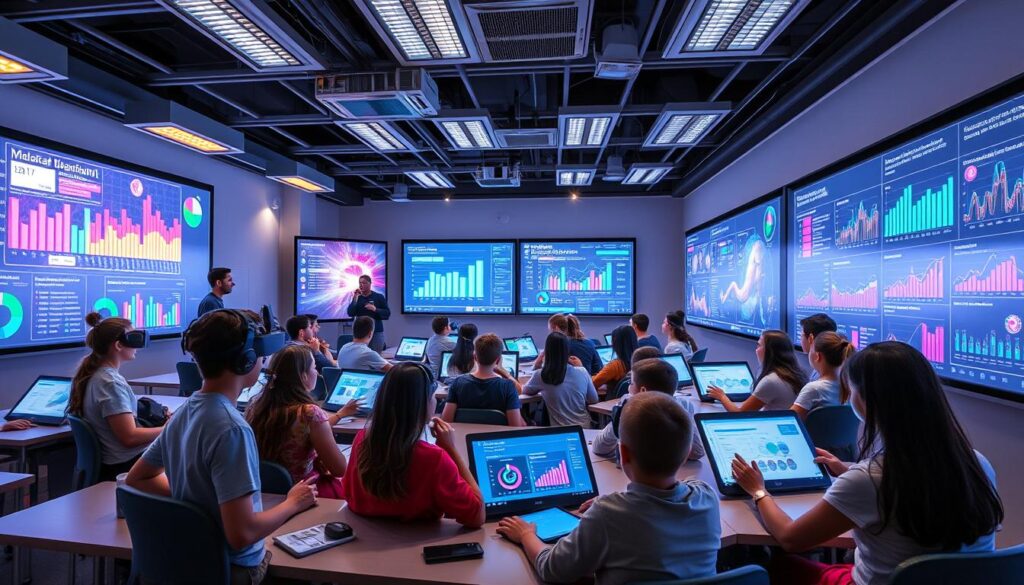
Conclusion
The landscape of future education is changing fast because of technology. It makes learning more personal and engaging. Innovations like virtual reality and apps bring lessons to life.
These changes make teaching methods better. They help meet the needs of learners today.
Educators and schools need to keep up with these tech changes. Embracing innovation is a must. It prepares students for a fast-changing world.
The future of education will need both tech and teamwork. This is to build a place where all students can learn well.
Leaders in education play a key role. They must push for fair access and keep adapting. This way, schools can stay strong amid tech changes.
This means every student gets a chance to do well in today’s world.
